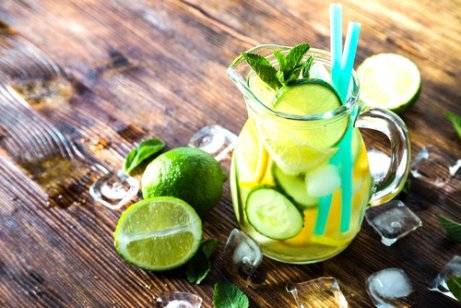몸을 해독하는 것, 즉 디톡스는 체내 축적된 독소 및 잔여물을 제거하는 과정이다. 이번 글에서 소개할 건강한 디톡스를 위한 생활 습관 9가지 따르면 몸에 큰 변화를 느끼게 될 것이다.
디톡스는 체중을 줄이며 몸에 남아 있는 독성 물질을 제거하는 데 도움이 된다. 건강을 위협하는 체내 독성 물질이 쌓여 있을 수도 있으니 기회가 될 때마다 몸을 해독하는 것이 좋다.
최소한 일 년에 한 번씩은 디톡스를 실행해야만 간과 신장처럼 과로하는 장기에 쌓인 독소와 노폐물들을 배출할 수 있다.
건강한 디톡스를 중시해야 하는 이유
- 대개 독소, 화학 물질, 정제 설탕, 정제 밀가루 및 독소로 가득 찬 기타 동물성 식품을 많이 먹는다
- 생활 속에서 환경 오염의 영향을 받기 때문이다
- 매일 대부분의 시간을 앉아서 생활하기 때문이다
- 사회적으로 스트레스와 불안은 점점 더 흔해지고 있고 건강을 악화한다
이러한 습관은 몸을 상하게 하고 약해지게 해서 결국 질병으로 고생하게 만든다.
또한 다음과 같은 질환을 일으킬 수도 있다.
- 만성 피로
- 피부 문제
- 알레르기
- 소화 장애
- 편두통
식습관을 포함한 일상 습관을 바꾸면 체내 독소를 해독하여 불균형해진 여러 장기 기능을 회복하게 한다.
건강한 디톡스를 위한 생활 습관 9가지
1. 자극제, 정제 설탕과 밀가루 등을 먹지 않기
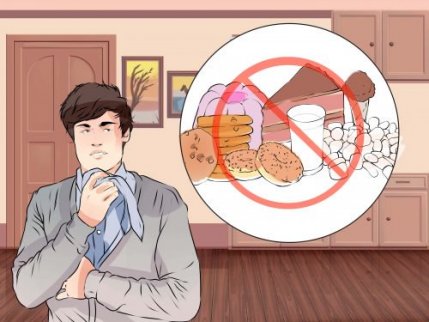
일상생활의 일부가 된 제품은 셀 수 없을 정도로 많다. 그런 제품 중에는 알게 모르게 우리 몸을 독소로 가득 채우는 것도 있다.
체내 독소를 제거하고 싶다면 다음 제품을 피하는 것이 중요하다.
- 담배
- 알코올
- 탄산음료
- 방부제가 들어간 식품
- 유전자 조작 식품
- 소금과 정제 설탕
2. 과일과 채소를 챙겨 먹자
생과일과 채소를 토대로 식단을 준비하자.
또한 수수, 퀴노아, 메밀가루, 귀리 등 통곡물의 섭취량을 늘리는 것이 좋다.
생채소는 비타민, 미네랄, 섬유질, 효소 및 항산화제를 제공하여 세포 재생을 자극하며 혈액을 깨끗하게 유지하는 데 도움을 준다.
3. 제대로 수분을 섭취하자
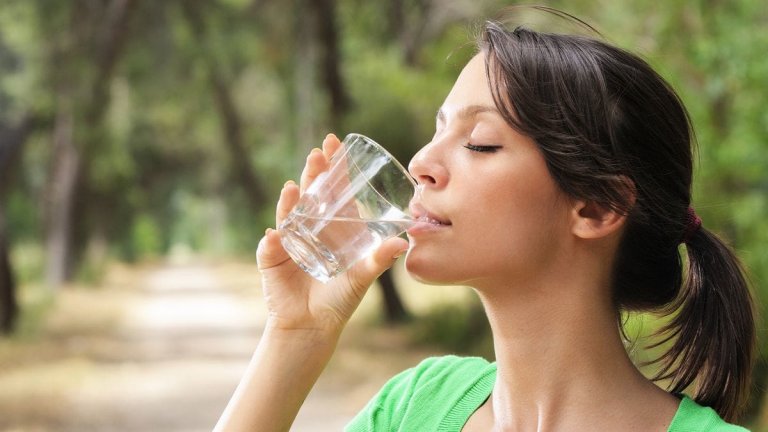
혈관을 해독하고 싶다면 물을 많이 마시자. 물을 많이 마시면 건강한 장 순환을 유지할 수 있을 것이다.
하루에 8~12컵의 물을 마시는 것을 권장한다.
더 읽어보기: 수분 부족을 알리는 내 몸의 신호
4. 건강한 디톡스를 위해 허브티를 마시자
일부 허브는 몸을 자연적으로 해독하며 혈액 순환을 개선하는 데 매우 효과적이다.
가장 권장되는 허브는 다음과 같다.
- 민들레
- 카밀러
- 용담
- 강황
- 꽃상추
- 로메인 상추
활용 방법
- 끓는 물 1컵에 허브 1스푼을 넣고 꾸준히 마시면 된다.
5. 매일 운동하자
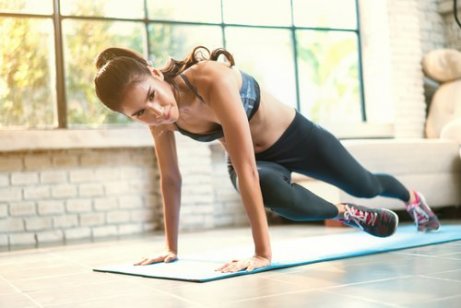
건강한 식단과 운동을 병행하는 것은 건강한 디톡스를 위한 완벽한 방법이다.
체중을 감량하면 근육이 강화되며 순환계, 호흡기 및 소화계를 자극한다.
운동은 스트레스와 불안 수치의 균형 유지에도 매우 좋다.
6. 충분한 수면을 취하자
활동 수준과 연령대에 따라 적절한 휴식과 수면을 취하는 것이 중요하다.
휴식을 취하면 몸이 스스로 회복하면서 에너지와 힘을 얻을 수 있어 균형 잡힌 느낌을 받을 수 있을 것이다.
7. 긴장을 없애는 취미 활동을 하자

춤추기, 음악 감상, 명상, 악기 연주 등 행복해지는 취미 활동을 해보자. 자발적으로 이러한 활동을 즐기면서 시야를 넓히고 긴장을 풀도록 한다.
8. 브러시를 이용해 몸을 닦자
피부에 브러시 질을 하는 것은 세포 재생에 도움이 되는 방법이다. 이는 혈액 순환과 림프계를 자극하기 때문이다.
또한 각질을 제거하는 데도 좋다.
더 읽어보기: 매일 티스푼으로 하는 10분 마사지
9. 위생 제품과 화장품을 천연 제품으로 바꾸자
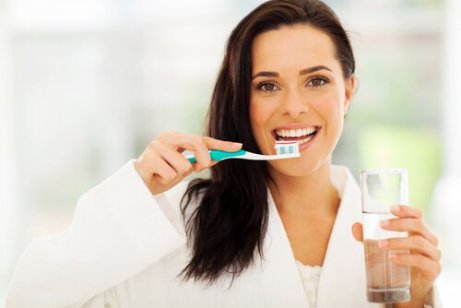
매일 사용하는 치약, 데오도란트, 목욕 비누 등 제품을 살펴보자.
이런 제품을 직접 만들거나 천연 화장품을 구매한다. 직접 만들어 쓰면 화학 성분, 착색제, 파라벤 또는 인공향을 첨가하지 않아도 된다.
건강한 디톡스를 위한 기타 권장 사항
체내 독소 제거는 식단을 바꾸는 것만으로는 충분하지 않다. 다음 사항도 염두에 두어야만 오랫동안 건강을 지킬 수 있을 것이다.
열린 마음으로 새로운 생활 방식과 식습관을 받아들여야 하며 이와 같은 생활 방식을 단기간이 아니라 항상 유지하려고 노력해야 한다.
근본적으로 마음가짐과 생활 습관이 변화되어야 체내 독소가 배출되고 건강을 유지할 수 있다. 눈에 보이는 결과는 체중, 모발 및 손톱 상태 등에서 나타날 것이다. 또한 기분이 좋아지고 에너지 수치도 높아진다.
가장 좋은 방법은 매일 건강한 식습관을 지키는 것이다. 건강한 식습관을 유지하면서 우리 건강에 도움이 되는 점을 더 찾아보자.
꾸준하게 이러한 변화를 유지하며 건강한 습관을 개발하도록 한다.
참고 문헌
모든 인용된 출처는 품질, 신뢰성, 관련성 및 유효성을 보장하기 위해 저희 팀이 철저히 검토했습니다. 이 글의 참고 문헌은 신뢰할 수 있으며 학문적 또는 과학적 정확성을 갖춘 것으로 간주되었습니다.
- Adams, J., Hofman, K., Moubarac, J.-C., & Thow, A. M. (2020). Public health response to ultra-processed food and drinks. BMJ (Clinical Research Ed.), 369, m2391. https://www.bmj.com/content/369/bmj.m2391
- Bjørklund, G., Cruz-Martins, N., Goh, B. H., Mykhailenko, O., Lysiuk, R., Shanaida, M., Lenchyk, L., Upyr, T., Rusu, M. E., Pryshlyak, A., Shanaida, V., & Chirumbolo, S. (2023). Medicinal Plant-Derived Phytochemicals in Detoxification. Current pharmaceutical design. https://pubmed.ncbi.nlm.nih.gov/37559241/
- Clem, J., & Barthel, B. (2021). A Look at Plant-Based Diets. Missouri medicine, 118(3), 233–238. https://www.ncbi.nlm.nih.gov/pmc/articles/PMC8210981/
- Cordova, R., Viallon, V., Fontvieille, E., Peruchet-Noray, L., Jansana, A., Wagner, K.-H., Kyrø, C., Tjønneland, A., Katzke, V., Bajracharya, R., Schulze, M. B., Masala, G., Sieri, S., Panico, S., Ricceri, F., Tumino, R., Boer, J. M. A., Verschuren, W. M. M., van der Schouw, Y. T., … Freisling, H. (2023). Consumption of ultra-processed foods and risk of multimorbidity of cancer and cardiometabolic diseases: a multinational cohort study. The Lancet Regional Health. Europe, 35(100771), 100771. https://www.thelancet.com/journals/lanepe/article/PIIS2666-7762(23)00190-4/fulltext
- Davani-Davari, D., Negahdaripour, M., Karimzadeh, I., Seifan, M., Mohkam, M., Masoumi, S. J., Berenjian, A., & Ghasemi, Y. (2019). Prebiotics: Definition, Types, Sources, Mechanisms, and Clinical Applications. Foods (Basel, Switzerland), 8(3), 92. https://www.ncbi.nlm.nih.gov/pmc/articles/PMC6463098/
- “Detoxes” and “Cleanses”: What You Need To Know. (s. f.). NCCIH. Consultado el 7 de mayo de 2024. https://www.nccih.nih.gov/health/detoxes-and-cleanses-what-you-need-to-know
- Dunagan, S. C., Dodson, R. E., Rudel, R. A., & Brody, J. G. (2011). Toxics Use Reduction in the Home: Lessons Learned from Household Exposure Studies. Journal of cleaner production, 19(5), 438–444. https://www.ncbi.nlm.nih.gov/pmc/articles/PMC3079220/
- Jiang-Xie, L.-F., Drieu, A., Bhasiin, K., Quintero, D., Smirnov, I., & Kipnis, J. (2024). Neuronal dynamics direct cerebrospinal fluid perfusion and brain clearance. Nature, 627(8002), 157–164. https://www.nature.com/articles/s41586-024-07108-6
- Kondo, R., & Iwakiri, Y. (2020). The lymphatic system in alcohol-associated liver disease. Clinical and molecular hepatology, 26(4), 633–638. https://www.ncbi.nlm.nih.gov/pmc/articles/PMC7641555/
- Latif, A., Shehzad, A., Niazi, S., Zahid, A., Ashraf, W., Iqbal, M. W., Rehman, A., Riaz, T., Aadil, R. M., Khan, I. M., Özogul, F., Rocha, J. M., Esatbeyoglu, T., & Korma, S. A. (2023). Probiotics: mechanism of action, health benefits and their application in food industries. Frontiers in microbiology, 14, 1216674. https://www.ncbi.nlm.nih.gov/pmc/articles/PMC10470842/
- Liu, Y. Z., Wang, Y. X., & Jiang, C. L. (2017). Inflammation: The Common Pathway of Stress-Related Diseases. Frontiers in human neuroscience, 11, 316. https://www.ncbi.nlm.nih.gov/pmc/articles/PMC5476783/
- Matos, R. A., Adams, M., & Sabaté, J. (2021). Review: The Consumption of Ultra-Processed Foods and Non-communicable Diseases in Latin America. Frontiers in nutrition, 8, 622714. https://pubmed.ncbi.nlm.nih.gov/33842521/
- Nieman, D. C., & Wentz, L. M. (2019). The compelling link between physical activity and the body’s defense system. Journal of sport and health science, 8(3), 201–217. https://www.ncbi.nlm.nih.gov/pmc/articles/PMC6523821/
- Osna, N. A., Donohue, T. M., Jr, & Kharbanda, K. K. (2017). Alcoholic Liver Disease: Pathogenesis and Current Management. Alcohol research : current reviews, 38(2), 147–161. https://www.ncbi.nlm.nih.gov/pmc/articles/PMC5513682/
- Palma, L., Marques, L. T., Bujan, J., & Rodrigues, L. M. (2015). Dietary water affects human skin hydration and biomechanics. Clinical, cosmetic and investigational dermatology, 8, 413–421. https://www.ncbi.nlm.nih.gov/pmc/articles/PMC4529263/
- Mayo Clinic. (2022). Agua: ¿cuánto tienes que beber todos los días? Mayo Clinic. Consultado el 7 de mayo de 2024. https://www.mayoclinic.org/es/healthy-lifestyle/nutrition-and-healthy-eating/in-depth/water/art-20044256
- Rossi, I., Mignogna, C., Del Rio, D., & Mena, P. (2023). Health effects of 100% fruit and vegetable juices: evidence from human subject intervention studies. Nutrition research reviews, 1–45. Advance online publication. https://pubmed.ncbi.nlm.nih.gov/37655747/
- Ruegsegger, G. N., & Booth, F. W. (2018). Health Benefits of Exercise. Cold Spring Harbor perspectives in medicine, 8(7), https://www.ncbi.nlm.nih.gov/pmc/articles/PMC6027933/
- Sallam, N., & Laher, I. (2016). Exercise Modulates Oxidative Stress and Inflammation in Aging and Cardiovascular Diseases. Oxidative medicine and cellular longevity, 2016, 7239639. https://www.ncbi.nlm.nih.gov/pmc/articles/PMC4707375/
- Sapkota, R., Zakaria, J., Glenn, E., Richard, H., Rimawi, A., Tobi, M., & McVicker, B. (2023). Alcohol Use and the Risk of Colorectal Liver Metastasis: A Systematic Mapping Review. Biology, 12(2), 257. https://www.ncbi.nlm.nih.gov/pmc/articles/PMC9953220/
- Savvaides, T., Koelmel, J. P., Zhou, Y., Lin, E. Z., Stelben, P., Aristizabal-Henao, J. J., Bowden, J. A., & Godri Pollitt, K. J. (2021). Prevalence and Implications of Per- and Polyfluoroalkyl Substances (PFAS) in Settled Dust. Current environmental health reports, 8(4), 323–335. https://pubmed.ncbi.nlm.nih.gov/34985714/
- Simet, S. M., & Sisson, J. H. (2015). Alcohol’s Effects on Lung Health and Immunity. Alcohol research : current reviews, 37(2), 199–208. https://www.ncbi.nlm.nih.gov/pmc/articles/PMC4590617/
- Soleimani, F., Dobaradaran, S., De-la-Torre, G. E., Schmidt, T. C., & Saeedi, R. (2022). Content of toxic components of cigarette, cigarette smoke vs cigarette butts: A comprehensive systematic review. The Science of the total environment, 813, 152667. https://pubmed.ncbi.nlm.nih.gov/34963586/
- Varga, Z. V., Matyas, C., Paloczi, J., & Pacher, P. (2017). Alcohol Misuse and Kidney Injury: Epidemiological Evidence and Potential Mechanisms. Alcohol research : current reviews, 38(2), 283–288. https://www.ncbi.nlm.nih.gov/pmc/articles/PMC5513691/
- Vilaplana i Batalla, M. (2010). El agua como nutriente. Actualización. Offarm, 29(4), 58–61. https://www.elsevier.es/es-revista-offarm-4-articulo-el-agua-como-nutriente-actualizacion-X0212047X10540710
- Viroli, G., Kalmpourtzidou, A., & Cena, H. (2023). Exploring Benefits and Barriers of Plant-Based Diets: Health, Environmental Impact, Food Accessibility and Acceptability. Nutrients, 15(22), 4723. https://www.ncbi.nlm.nih.gov/pmc/articles/PMC10675717/
- You, S., Ma, Y., Yan, B., Pei, W., Wu, Q., Ding, C., & Huang, C. (2022). The promotion mechanism of prebiotics for probiotics: A review. Frontiers in nutrition, 9, 1000517. https://www.ncbi.nlm.nih.gov/pmc/articles/PMC9581195/
